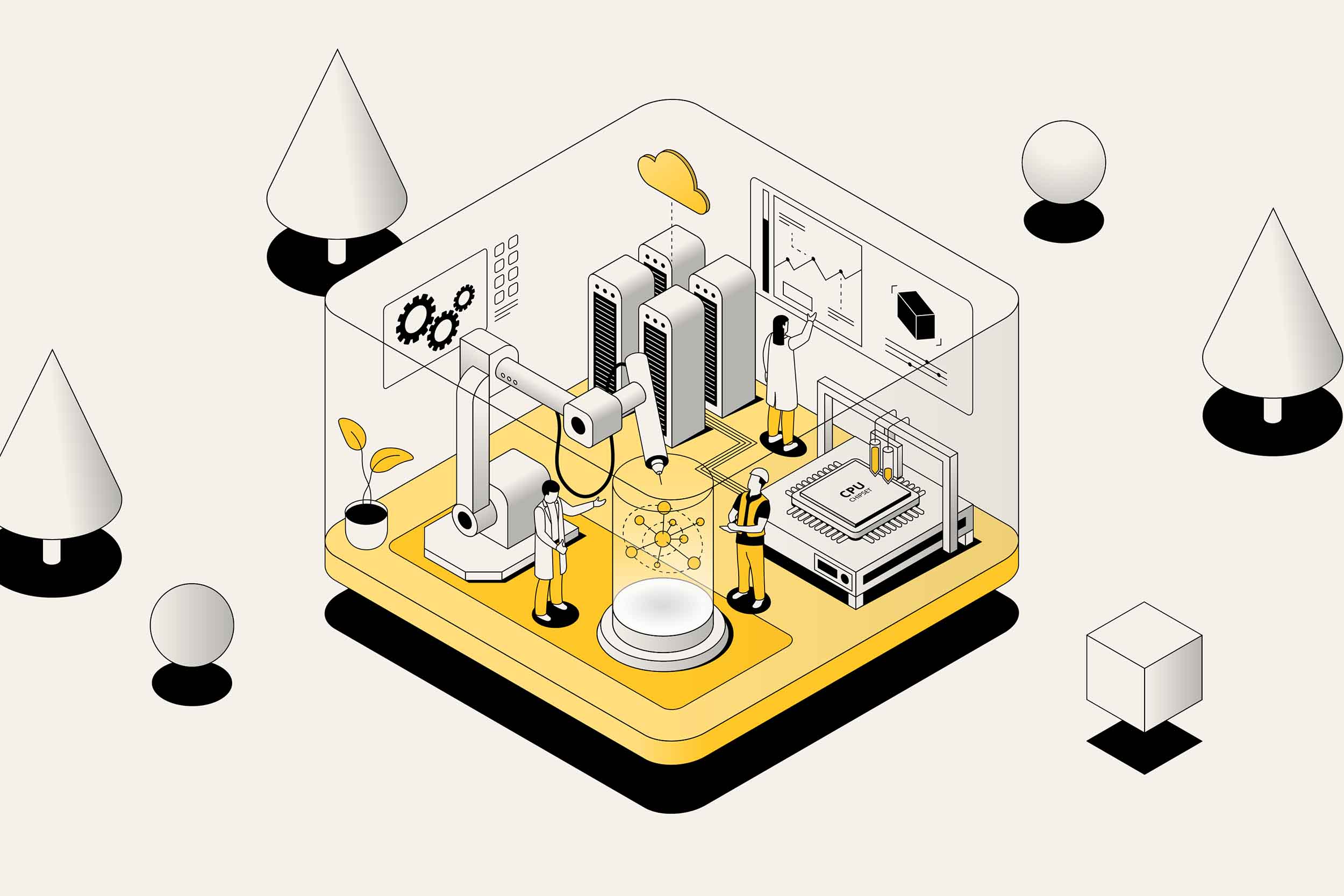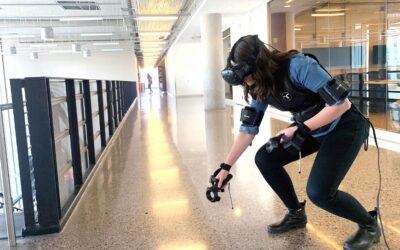Factories of the future
How ASU will help industry work on the cutting edge of tech
By Scott Seckel
March 8, 2022
This story originally appeared in ASU News.

As part of a statewide plan to attract high-tech industry, Arizona State University is building five science and technology centers.
ASU’s role in the New Economy Initiative is to lend its muscle as a research powerhouse to industry partners, keeping manufacturing on the cutting edge.
MORE: Creating the future of Arizona
The centers are based on where experts know technology is headed. One of the two just launched is the Advanced Manufacturing Science and Technology Center, located on the Polytechnic campus.
Dhruv Bhate likes to call it MADE: manufacturing, automation and data engineering.
Bhate, an associate professor in the School of Manufacturing Systems and Networks, one of seven schools in ASU’s Ira A. Fulton Schools of Engineering, gave a tour of the facility recently and talked about its role, what relationships with industry will look like and what form success will take.
Question: What role will advanced manufacturing play in the new economy?
Answer: First, you need to ask what is advanced about advanced manufacturing?
Manufacturing of the future is going to involve three fundamental pillars that in some way are pushing the edge of what we have done, what has come before, and taking it into new territory to provide new services, new products and completely new materials.
The first of these is what we call process science and engineering. The second of this is robotics and automation. And finally, the third is data analytics, cybersecurity and AI (artificial intelligence).
What ties these three together is really what we are calling advanced manufacturing. And that is where we believe the jobs of the future are going to be created. That’s what we believe will form the foundation for innovation in the future, be it in the form of IP (intellectual property), be it in the form of companies that are spun off to create new products or to create new materials or new processes that enable new products. And that, in a nutshell, is what the role of advanced manufacturing is going to be in the economy of the future.
Q: What will additive manufacturing — 3D printing — enable?
A: Materials will change a lot of things. In the past, materials were limited. You had plastic, metal, ceramics and composites. Additive manufacturing has turned all that on its head. We are able to combine materials in ways that we were not able to before. With 3D printing, materials can be combined in ways that were previously impossible. Materials performance can be improved more than it has before.
Let’s say you want to build a crash structure for protection in a helicopter. The pilot is held up with one structure, and energy from a crash is absorbed with another structure. With additive manufacturing, the two can be combined, using less material and reducing weight with a few different solutions, like forms and honeycombs, but really take it to the next level and involve design to get further advances.
Q: Nanotechnology (the use of matter on an atomic, molecular and supramolecular scale for industrial purposes) is on the cutting edge. It allows tennis balls to last longer and golf balls to fly straighter. Bandages are being infused with silver nanoparticles to heal cuts faster. It’s a technology that’s applicable to many industries and products. What are the challenges to adopting it widely?
A: The challenge with nanotechnology has been scaling it. You know, I can make some in the lab, but how do I scale it up to where there are paints with nanomaterials that may reduce the cost of the paint or reduce the environmental footprint? Now we are talking about scaling up technologies from the lab to manufacturing scales, where they can actually have an impact on the market.
Thinking about how to scale that, we’ve often been doing this in a very ad hoc trial-and-error manner. … What has really changed in many ways is data and our ability to utilize data in ways that we were not before. Now, I can use data to make improvements on my process much faster than I could before. I can, with the help of automated tools like micro microscopes and testing machines, generate a good understanding of the big behavior of these structures. Using techniques like data analytics and machine learning to tell me how I need to change my process to improve it and make it the next-generation material. Nanomaterials with computational tools allow us to design structures in ways we could not before.
Q: What type of problems do you expect companies to show up with?
A: A lot of companies have invested in new manufacturing processes or they want to explore a new material. One of the challenges when you do that is it’s all very well to fabricate a new material in a lab. But if you want to put it on an aircraft, you have a lot of steps to go through in the interim. Some of this is fundamental research. Can I develop that new alloy that can resist even higher temperatures than what I’ve been able to do before? Well, that might require alloy redesign, but some of this is what we would call mid-technology readiness, where it works in the lab, but I’m not sure if the FAA is going to certify this particular part. And for me to bridge that gap from the lab to a component flying on an aircraft, I really need a lot of data, and we’ve got be smart about this data collection today.
Every time we introduce a new metal, say for a 3D printing system, it takes us a couple of years — a year to a couple of years — on the order of a million dollars or so to generate the kind of data that we need to certify this particular process, this particular material, this particular part. So what I expect companies to come to us for are two levels of engagement.
One is on the fundamental research side, where we have the deep knowledge expertise and the technical capabilities to help companies evaluate the fundamental research side of things, but also to engage on that gap between lab to market, the so-called “valley of death” where innovation is not able to translate and have an impact in the market.
We are using our test equipment, our characterization equipment, along with computational tools like data analytics and machine learning to essentially get that data smarter than we have before, with much less of an investment than we have before. Where the old philosophy has been to get a certain number of samples, the new philosophy is can I do that with fewer samples, but then use data analytic techniques to essentially let me scale and bridge to that gap where I get sufficient data to certify my material.
Q: What will success look like?
A: If we fast forward a couple of years, we have an ecosystem of faculty members, of industry partners and of students and staff all working together to solve problems and push Arizona leadership in advanced manufacturing, create that next wave of jobs that have been born and owe their birth to initiatives and ideas and projects that came out of the STC (Science and Technology Center). If we see that happening, that means we’ve been successful.
Fulton
Researcher
Dhruv Bhate
Associate Professor
The Polytechnic School
Related Stories
Construction education goes virtual
Associate Professor Steven Ayer has made it possible, with augmented and virtual reality, for students to visit construction sites without ever leaving the classroom
When time doesn’t heal all wounds
Fulton Schools researcher Jordan Yaron’s innovative approaches to healing chronic wounds are supported by the Wound Healing Foundation and National Institutes of Health
Helping women thrive
Fulton Schools students find connections, support and success in engineering and technology majors and career preparation through student organizations
Within reach
The first prosthesis to combine soft robotics and natural biomechanics begins new phase of extensive clinical trial led by Mayo Clinic and ASU researchers



